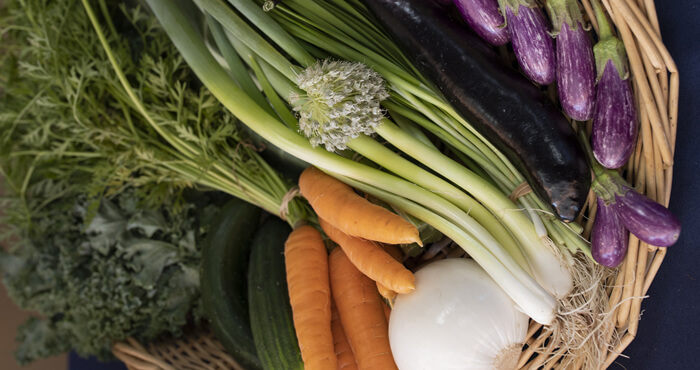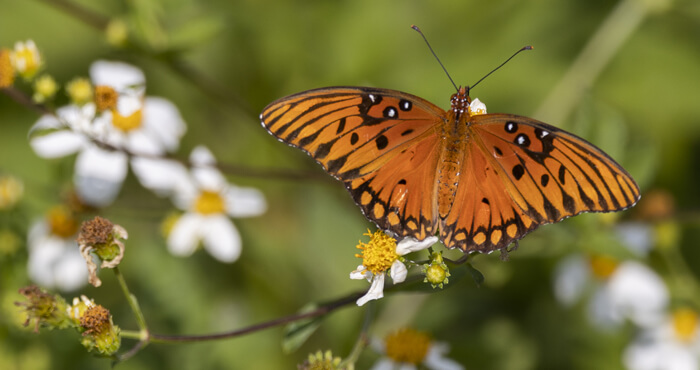
Plants for Cold Weather
Even though winter weather can easily ruin a garden, you can grow cold-hardy plants to take the work and the worry out of freeze protection.
Annuals
Once your summer annuals start to fade, replace them with plants for cold weather specifically, which can withstand freezing temperatures. Examples include the following:
- Pansies
- Violets
- Snapdragons
- Nemesia
- Diascia
- Petunias
Place these plants in a spot where they will receive full sun. Remember, this location may be different than in the summer because of the lower winter sun.
Also, add color to your garden by incorporating ornamental cabbages and kale in flower beds and containers.
For more information on growing annuals in Florida, as well as other cold-hardy variety suggestions, read "Gardening with Annuals in Florida."
Vegetables
For winter vegetable gardens, cole crops are reliable cool-weather producers. Cole crops, which are members of the Brassicaceae family, include broccoli, cabbage, collards, turnips, and kale, among others.
Use some of these varieties for your winter-proof garden:
- Broccoli—‘Waltham,’ ‘De Cicco,’ ‘Packman’
- Cabbage—‘Rio Verde,’ ‘Savoy,’ ‘Flat Dutch’ (also try Chinese Cabbages, such as ‘Bok Choy’ or ‘Napa’)
- Carrots
- Collards—‘Vates,’ ‘Top Bunch,’ ‘Georgia’
- Kale—‘Redbor,’ ‘Winterbor,’ ‘Dwarf Blue Curled’
- Spinach
- Turnips—‘Purple Top,’ ‘White Globe’
To view planting dates and recommendations for these and other plants for cold weather, look in the "Florida Vegetable Gardening Guide."
Cold Protection
Even cold-hardy plants that can withstand freezing temperatures aren’t invincible. During a hard freeze, make sure to properly protect plants.
- Never wrap plants with plastic. If plastic touches plant foliage, it can move heat away from the plant and increase cold damage. If you use plastic covers, make sure they’re supported by frames or hoops and are not directly on the plants.
- Lay or wrap lightweight fabrics, such as blankets or garden row covers, over plants and beds. In order to provide protection, covers must reach all the way to the ground and be anchored.
- Make sure covers of any material are not touching the foliage.
- Place mulches around perennials to protect the roots and trap soil heat. Their roots only need protection because some perennials die naturally in the winter, while others can withstand freezing temperatures and grow new foliage from their roots.
For more information on cold protection methods and plants for cold weather, talk with your local county Extension agent or read the publication, "Cold Protection of Landscape Plants."
Resources
Other UF/IFAS Sites
- Gardening Solutions
- Entomology and Nematology Department
- Environmental Horticulture Department
- FAWN: Florida Automated Weather Network
- Florida-Friendly Landscaping™ Program
- Florida Master Gardener Program
- IPM Florida
- Pesticide Information Office
UF/IFAS Publications
- Florida-Friendly Landscaping™ Program
- Central Florida Gardening and Landscaping Fact Sheets
- Starting a Garden
State & Federal Agencies
- Florida Department of Agriculture and Consumer Services (FDACS)
- Florida Department of Environmental Protection (FDEP)
- Florida Energy Systems Consortium (FESC)
- U.S. Environmental Protection Agency (EPA)
- USDA Plant Hardiness Zone Map--U.S. National Arboretum
Organizations & Associations
- American Community Gardening Association
- American Horticultural Society
- Florida Native Plant Society
- Florida Nursery, Growers and Landscape Association (FNGLA)
- North American Native Plant Society
Other Sites & Publications
UF/IFAS Mobile Web Apps
Plant Hardiness Zones
RESOURCES
UF/IFAS Publications
- Cold Protection and Chilling Damage of Landscape Plants
- Florida Vegetable Gardening Guide
- Gardening with Annuals in Florida
UF/IFAS Sites



.jpg)

.jpg)
